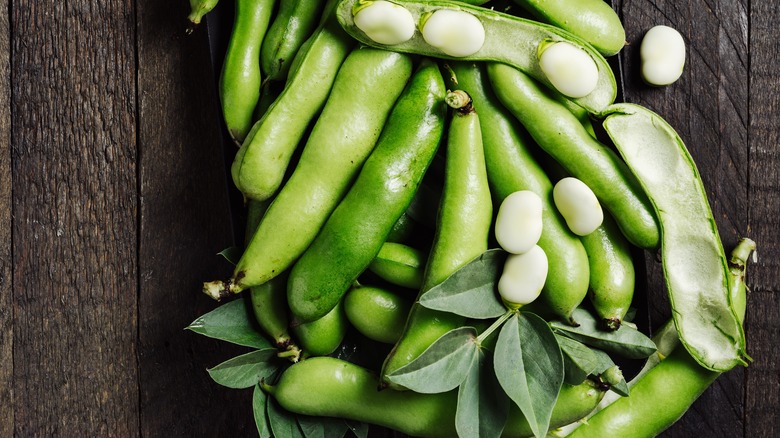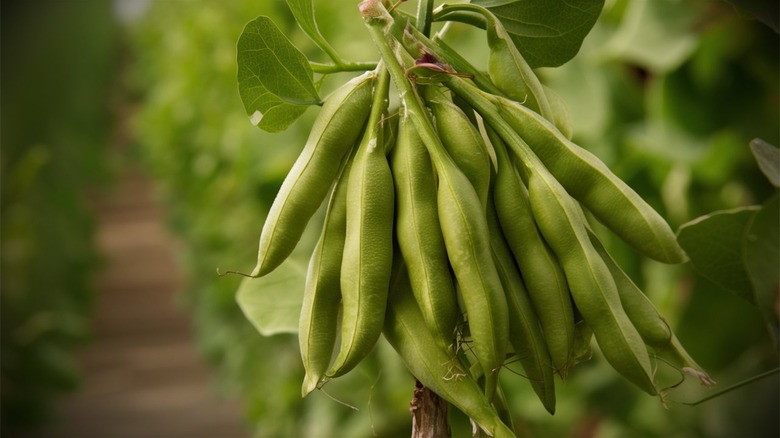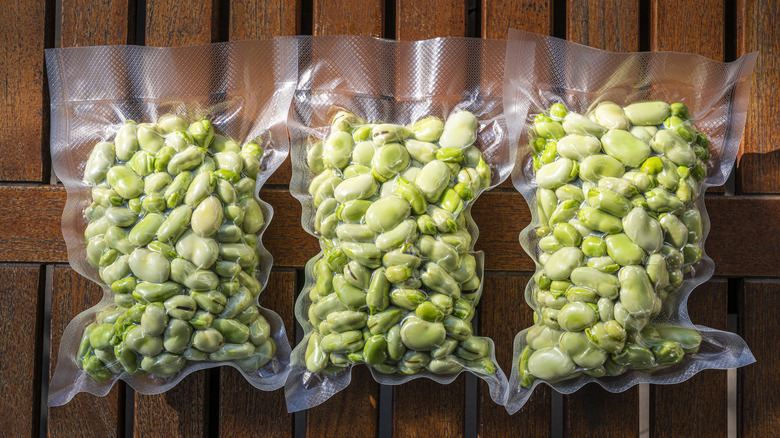How To Choose The Best Fava Beans At The Store Every Time
Compared to popular choices like black beans and chickpeas, fava beans are somewhat underrated legumes. You can't always find them at the grocery store, as they're only in season in the spring and summer months, but home cooks ought to pick them up when they can. While dried favas are available year around, there's nothing quite like the fresh ones, with their nutty flavor and creamy texture when cooked.
That said, not all of the beans that make it onto store shelves are created equal. If you want the freshest, best-tasting beans for dishes like fava bean hummus or a fava bean and pecorino crostini, there are signs to both look for and avoid. The taste and texture of these beans can vary greatly depending on their maturity at harvest time, and how big they were allowed to grow. Surprisingly, bigger pods aren't better.
There's another benefit to choosing beans with specific characteristics in mind: their shelf life. Buying fresher beans naturally equates to lasting freshness. Stored properly, they'll keep in the fridge for up to two weeks. You can enjoy favas long after you've finished the other produce from your last shopping trip, making them a great investment for future meals.
These characteristics mean fava beans are their freshest
If you're looking to pick out some fava beans that would meet even Hannibal Lecter's high standards, resist the temptation to buy the largest pods. When fava beans are left to grow too big, they can take on a mealy texture and a bitter flavor. One sign that the pods were picked at the right time is if they still have their stems attached. This means were harvested right when they reached maturity, and weren't allowed to grow too large.
If a few overly mature or very young, tiny bean pods make it into your basket, don't worry. Fava beans are perfectly safe to eat no matter how young or mature they are, as long as they're properly prepared. Younger, more tender favas even have edible pods, most of the time.
What else should you look for when buying fava bean pods? Look for a velvety exterior with no big bulges (which indicate overly large beans). When you feel the length of the pod, the beans inside should be evenly spaced and sized. Each fava should be an even shade of pale green across their entire surface, but if there's a few black spots, don't toss them aside. Spots are a sign that the plant was exposed to a stressor — usually a fungus — during its growth period, but the quality and safety of the beans themselves are not damaged by it.
Store fava beans properly for lasting freshness
While it might be tempting to shell and prep fava beans in advance, keep them in the fridge and in their pods until you're ready to use them. The process of shelling can be a bit labor-intensive, but doing it too early shortens the beans' shelf life. Store the pods in an unsealed plastic bag for air flow, and they'll last for up to a week and perhaps longer — although it's a good idea to check them daily for signs of spoilage.
If you're concerned that your fava beans are reaching the end of their life span, you can also freeze them. Remove the beans from their pods, then remove the outer skin of each individual bean. (It's a time-intensive process, but a necessary one; that outer membrane is bitter and inedible.) Some sources suggest blanching the beans and then cooling them in an ice bath, to make removing that outer skin easier. After you boil the favas, strain them, and remove the skins, make sure you let them cool completely before drying them off.
Store the beans in an airtight freezer bag or container. When frozen this way, they'll be good for up to eight months, ready to be defrosted at any time for curries, dips, mixed roasted veggies, and hearty wintertime soups. (Favas are a great unique way to elevate chicken soup, for instance.)


